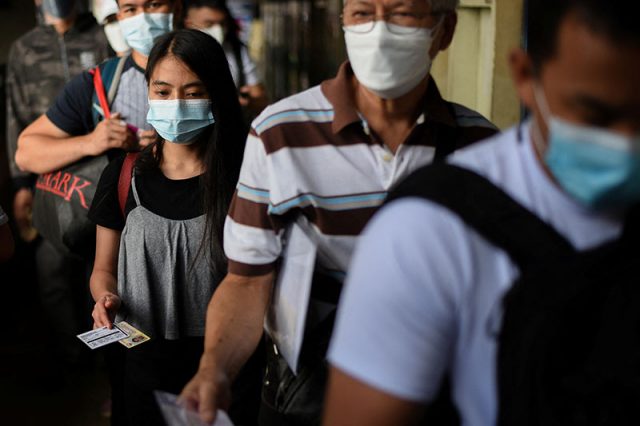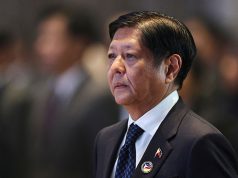
The chief executive was reminded anew of the significance of having a chief public authority on health following his latest comment about the post’s vacancy.
President Ferdinand Marcos Jr on Thursday said that he would only appoint a health secretary after the country’s COVID-19 pandemic situation has “normalized.”
According to him, the Philippines must first lift the state of public health emergency and state of calamity before he could name a chief for the Department of Health.
“We have to get away from the emergency stance of the DOH because we have to open up businesses. We have to make the Philippines more hospitable to travelers — both business and tourists — and it does not help if we are still under a state of calamity, if we are the only country that still has mask protocol… Kailangan pa nating ayusin ‘yun,” Marcos said to reporters.
“We must treat the pandemic no longer, we must treat COVID no longer as an emergency, but something that we will have to manage forever. It’s like flu, like pneumonia. Nandiyan lagi ‘yan pero mag-ingat tayo para hindi tayo magkasakit, and that is [the] way we should be handling COVID,” he added.
Marcos further said that it would be difficult to immediately lift the state of public health emergency and state of calamity since it would directly affect the DOH’s current handling of the health crisis.
“We cannot remove ourselves yet from the way we are handling it dahil halimbawa, ‘pag tinanggal ko ‘yung state of calamity, hindi makukuha ng ating mga health workers ‘yung kanilang benepisyo na nasa batas, hindi tayo makakapag-import ng vaccine. ‘Yung sa procurement, masyadong mabagal ang magiging procurement,” he explained.
“Sa ngayon, naghahanap kami ng paraan para nga ma-normalize na natin at hindi na natin kailangan sabihin na ang Pilipinas, state of calamity pa rin, para masabi natin sa ating potential investors, ‘Pumunta kayo rito sa Pilipinas, maayos na’,” Marcos added.
“Paabutin natin doon and then we will normalize also all the reorganization of the government,” he continued.
According to Marcos, he wants everyone to understand that “not everything is a crisis.”
“I-normalize natin ang trabaho ng gobyerno,” he said.
Health Undersecretary Maria Rosario Vergeire currently acts as the officer-in-charge of the DOH.
She was assigned last July and is supposed to hold the position until July 31 or until Marcos formally appoints a health secretary.
Meanwhile, his comments about appointing a DOH chief once the COVID-19 situation has “normalized” concerned some Pinoys who thought having one is more crucial amid the COVID-19 pandemic and threats of monkeypox.
“Great sir, may I remind you, the reason why the country badly needs a health secretary is to MANAGE and INFORM the public about the state of the health sector. You appointing them after everything is ‘normalize[d]’ deflects that purpose,” a Twitter user wrote.
“So sino mamamahal ng pag NORMALIZE ng health situation natin if walang HEALTH SECRETARY? We are still in PANDEMIC, so APPOINTING A HEALTH SECRETARY SHOULD HAVE BEEN THE NO. 1 PRIORITY above anything else, right?” another Pinoy commented.
“Huwawww… Amidst all these [COVID] variants na nagsusulputan lately, mag-appoint lang [kapag] normalize na… Prevention is better than cure nga eh,” wrote a different Filipino.
“You said no need for a new @DOHgovph secretary because DOH was about ‘public health in general.’ Now you say you’ll appoint one once things return to normal. Don’t you see that we need a competent DOH secretary to help steer us there??” a Twitter user said.
Marcos’ comments came after the country detected Omicron subvariant XBB and the XBC variant, a recombinant of the Delta variant and Omicron BA.2.
Both are more infectious than the original Omicron variant.
The XBB subvariant is said to be the cause of Singapore’s recent surge in COVID-19 cases. Some experts also believe it is more antibody-evasive, but its level of severity has yet to be determined.
OCTA Research Fellow Guido David said that the subvariant is “definitely more infectious” than the Omicron BA.5, another subvariant that is already more transmissible in itself.
He also said that Omicron XBB, apart from having the usual symptoms (fever, runny nose, sore throat, coughing, sneezing, body pains), may also bring nausea, vomiting and diarrhea.
Meanwhile, the XBC variant is under monitoring and investigation by the United Kingdom Health Security Agency, although the World Health Organization has yet to determine its risk.
David noted that the variant, being a recombinant of Delta and Omicron, “could be a concern.”
“If we recall, the Delta variant produced more death and hospitalization,” he said.
In the Philippines, there are a total of 81 cases of Omicron subvariant XBB and 193 cases of the XBC variant, which has already recorded five deaths.
As of Friday, the DOH said there is already a local transmission of the subvariant and the variant since there are no cases of it linked to overseas travel.
RELATED: Still no DOH secretary as gov’t detects Omicron subvariant XBB and variant XBC









